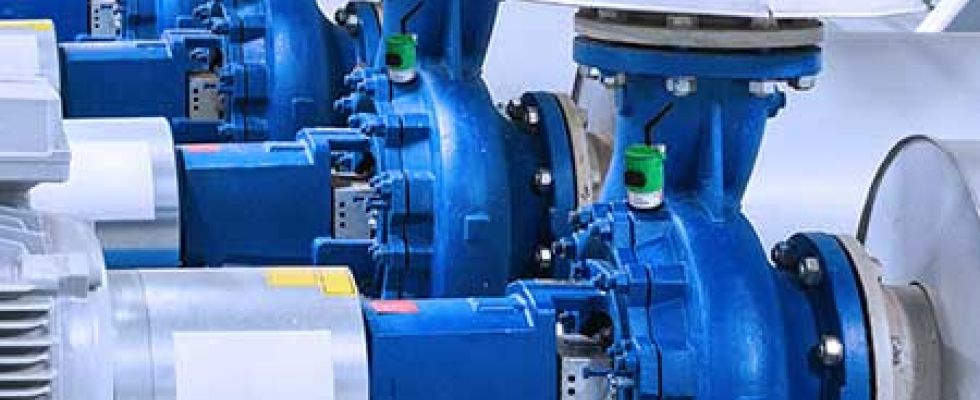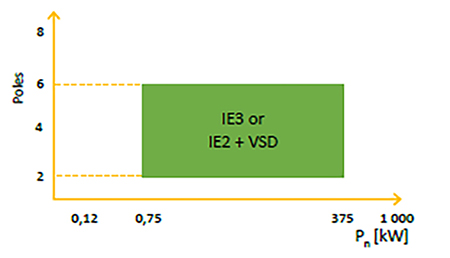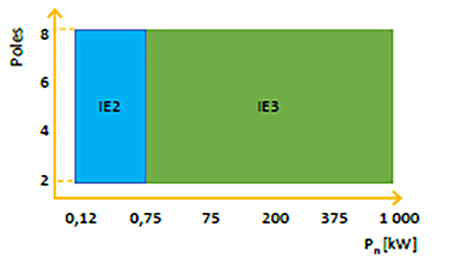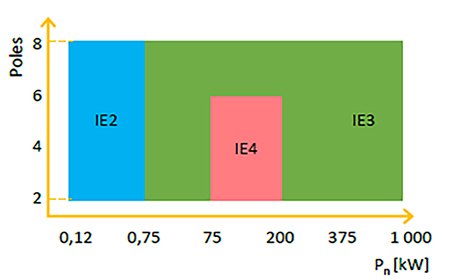
North American pump OEMs that ship products to the European Union (EU) may want to check their product motor nameplates before they leave the warehouse.
Beginning July 1, new product design requirements take effect across the EU, establishing new energy efficiency standards that could significantly impact many North American-made pumps.

First introduced in 2009 and updated twice since, the European Commission’s Ecodesign Directive aims to reduce energy consumption throughout a product’s life cycle. But its regulations for electric motors and variable speed drives have historically lagged behind those in North American energy efficiency legislation.
That is about to change. With the latest updates, the EU has joined and, in some cases, leapfrogged past North American efficiency requirements. Products that do not meet these energy standards will be prohibited from entering the EU market after July 1.
Get Ready
Here is what is changing—and what users need to do to be ready for shipments coming up this summer.
For the past 30 years, pump OEMs have been able to choose a single motor or motor-drive combination for each product they manufacture and export identical products around the globe. The change in EU efficiency regulations, however, may require OEMs to install different motors in products exported to the EU or sold in North America but that may eventually end up somewhere else.
It is important to understand and act on these changes now so noncompliant products do not get stuck at the port if they are discovered to be below standards.
Changing premium efficiency qualifications
Since 2017, EU rules said products requiring premium efficiency (known in the EU as IE3) motors could, as an alternative, use high efficiency (known in the EU as IE2) motors operated with a variable frequency drive (VFD). A large percentage of the EU market chose the IE2 motor/drive option.

With the revised regulations, products with these motor/drive combinations will no longer meet EU Ecodesign Directive requirements. Beginning July 1, most induction motors between 50 volts (V) and 1,000 V will require premium efficiency (IE3) motors, whether used with a drive or not.
The 60/50 hertz (Hz) complication
In North America, many premium efficiency (IE3) motors are labeled 60/50 Hz. That is because they are built to perform at the 60 Hz standard and meet premium efficiency while used in North America. They are also able to run at the 50 Hz system standard used in the EU but at an IE2 efficiency.
With the latest changes, the EU efficiency standards now limit the ability to use a 60/50 Hz motor for EU applications. The new Ecodesign Directive regulations say that a 60/50 Hz premium efficiency (IE3) motor that meets IE3 at 60 Hz must also meet IE3 at 50 Hz. Typically, a motor that meets IE3 at 60 Hz will only meet IE2 and not IE3 at 50 Hz.
Come July 1, in other words, a 60/50 Hz premium efficiency motor will no longer meet EU IE3 efficiency standards—only a “pure” 50 Hz premium efficiency motor will.
What OEMs Can Do
To address these changes, pump OEMs have two primary options. The first, simpler option is to switch to a dedicated 50 Hz premium efficiency (IE3) motor for both OEM and general-purpose use globally.

A 50 Hz premium efficiency (IE3) motor will meet EU efficiency standards and exceed North American 60 Hz efficiency standards. While certainly possible, this option is not very practical for many OEMs, since it will increase motor costs by as much as 25%.
A second, more economical alternative is to stock two versions of premium efficiency motors—one rated for 60 Hz for use in North America and one rated 50 Hz for use in the EU. The current 60/50 Hz designs could continue to be used for other geographic regions that only require IE2 efficiency at 50 Hz.
Small Motor Implications
The EU’s latest Ecodesign Directive also seeks to fill other energy efficiency regulation gaps. For example, a small motor rule is going into place. Beginning July 1, fractional motors between 0.12 kilowatts (kW) and 0.75 kW must now meet IE2 efficiency requirements. Previously, the EU Ecodesign Directive did not include regulations governing fractional motors.
The new small motor regulations are more expansive than the ones governing motor efficiency regulations in the U.S., where only small open motors are regulated. Definite purpose and totally enclosed fractional horsepower motors currently remain unregulated in the North American regulations.
Because they are unregulated in North America, fractional motors of less than 0.75 kW have historically not listed their efficiency on their nameplates. With the new EU regulations, OEMs must upgrade the nameplates to not only meet the new efficiency standards but also to address all labeling requirements. For example, the standard used for testing and labeling procedures must now be noted.
Act Now
For North American pump OEMs that have relied on a single motor or motor and drive pumping solution for their products, there is no time to waste. It is time to contact the motor manufacturer, confirm the type of motors and confirm that they comply with the updated EU efficiency standards.
Every situation is different. While this article provides an overview of the new standards, it will take a careful product review to determine what, if anything, must be done to prevent products from being held at EU Customs.
Now is the time to look ahead to July 1, 2023, when the next set of new EU efficiency regulations take effect. That is the date when large 75 kW to 250 kW motors will be required to meet IE4 efficiency standards in the EU.
References
Information was used from the CEMEP/CAPIEL report. CEMEP is the European Committee of Manufacturers of Electric Machines and Power Electronic, and CAPIEL is the European Coordinating Committee of Manufacturers of Electrical Switchgear and Controlgear.

